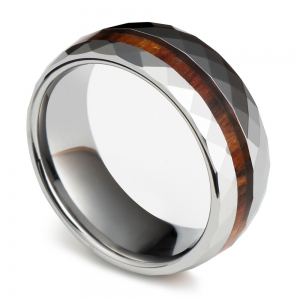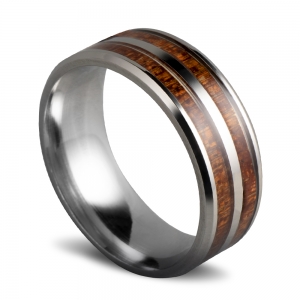How Does the TLSO Back Brace Work?
Injuries to the spine, especially the thoracic back, are no laughing matter. Therefore, it??s really important that your thoracolumbosacral (TLSO) orthosis does a good job.
The TLSO style of back brace wraps under the arms and rib cage and supports the lower and middle back as well as the top of the hips. It looks a lot like a backpack, with some added bells and whistles.
Stabilizes and Straightens the Spine
The corrective brace stabilizes the back from the top of the sacrum (S1 vertebra) just above the tailbone through the lumbar (lower) spine to the top of the thoracic spine (T2 vertebrae) just below the neck. Straightening the spine can help with kyphosis treatment or some mechanical back pain issues.

Plus the full-body back brace limits your ability to hunch the back, twist the torso or bend side to side. Besides improving your posture, controlling your back??s motion can also prevent an existing injury from worsening, slow osteoporosis-related degeneration and help your back heal post-surgery. (Find out what to expect after back surgery.)
Relieves Back Strain and Pain
The lumbar/thoracic back brace also compresses your abdomen, which reduces pressure on the spine. This, in turn, eases your pain and helps the spine to heal.
A mechanical pulley system makes it easy for you to generate a lot of compression with very little effort or twisting. The corset system multiplies your force by five.
What Does the Thoracic Brace Treat?
The hard back brace for straightening the spine and easing pressure on it can help correct and relieve pain stemming from:
- Kyphosis
- Osteoporosis
- Spinal compression fractures
- Bad posture
- Spinal stenosis
- Hyperextension
- Mechanical back pain
The kyphosis brace comes with side panels you can remove as your treatment advances. The modular design makes it one of the best immobilizers for care both before and after spine surgeries, such as spinal fusion.
The adjustable back brace for comes with an L-code of L0464 that you can use for medical reimbursement for treatment of a T12 compression fracture or hyperextension, as a few examples.
User-friendly Features of the Full Body Back Brace
The parts of the back brace that come in contact with your skin are covered with a soft, plush material, with added padding in sensitive areas like the top of the shoulders near the neck. This padding can be removed if you want an even sleeker fit.
For a full-body brace, it’s surprisingly low-profile, with the corset-style mechanical pulley system helping it hug your body.
The panels at the back and front of the TLSO immobilizer have small holes that make them more breathable. Plus the abdominal belt is covered in mesh.
The full back support brace has a cutout for the spine, keeping pressure away from the sensitive region as you recover from a fractured vertebra or deal with inflammation stemming from osteoporosis or kyphosis, for example.
The thoracolumbar brace comes with a sternum pad that stops you from hunching and corrects your posture. This pad is articulating, meaning it will wiggle a bit up and down along with the body while still encouraging good spinal alignment.
Another bonus you can buy this postural kyphosis brace at a far less expensive price than the thousands of dollars you can spend on custom back braces for scoliosis, kyphosis or other back problems affecting adults.
Easy Application and Adjustment
For a pretty high-tech thoracic spine support, the medical back brace is really pretty simple to put on and adjust. The hard plastic back brace goes on much like a backpack, with some extras like an abdominal compression belt and a sternum support pad.
Fasteners make it easy to secure the compression belt around your waist and adjust the shoulder strap length. The tab of the mechanical pulley system and the removable side panels also hook to the belt via fasteners.
This pulley system could not be easier to use you simply pull the tab away from the body (which is easy to do since the mechanical system amplifies your force) and attach it to the belt once you have the compression as you like.
When you’re ready to take the thoracic spine brace off, you can simply detach the quick-release shoulder strap buckles and pull apart the fastener belt.
No tools are needed to adjust the height of the sternum pad or to remove the brace’s side panels.
How Good Spine Alignment Treats Compression Fractures, Kyphosis & More
Holding the spine upright and protecting against damaging movement can keep you on the road to recovery following many injuries to the back. And the abdominal compression the belt and pulley system generate is just as important to healing.
Compressing this area of the body creates pressure that reduces stress on the spine. This can prevent or slow the crumbling of vertebrae due to osteoporosis or spaces in the spine from narrowing (stenosis), which can lead to other problems like a pinched nerve, thoracic outlet syndrome or spondylolisthesis.
Can It Help with Kyphosis Treatment?
This is a great brace for correcting some types of kyphosis, or an overly rounded upper back. Besides the visible dowager’s hump or hunchback, this excess curve can also throw the back out of whack, causing pain. If you are still growing or are dealing with kyphosis caused by osteoporosis, bad posture or trauma, bracing may help.
Scheurmann’s kyphosis, which affects children, is one such case. This disease causes the front of the vertebrae to grow more slowly than the back part of the bone, creating wedge-shaped vertebrae and a hunched back.
Wearing a brace that helps keep the back straight and the shoulders back can slow the progression of the disease. And this one is especially great since the lumbar belt also reduces pressure on the vertebrae, giving growth at the front of the vertebrae a chance to catch up with the back, which could even fix the problem.
Orthopedic kyphosis treatment can also help in instances where it’s caused by injury to the spine, osteoporosis or bad posture. A hunched back feeds the problem, as this posture causes the curve progress more rapidly. Thus, straightening the spine with a brace can help slow the progression of osteoporosis or prevent further damage after trauma.
Bracing is also beneficial in terms of retraining the muscles to support the back in an upright position. This should be paired with exercises to strengthen the back.
Can This Back Brace Be Used to Treat Scoliosis?
In the early stages of mild scoliosis treatment, you might consider wearing this torso brace. But to straighten your back for good, you will likely need a clamshell back brace specifically geared toward scoliosis treatment, such as a Boston brace, a Wilmington brace or (more rarely) a Milwaukee brace.
Frequently Asked Questions About TLSO Brace
- What conditions / injuries does this spine alignment device treat?It can help with many problems with the low and mid-back including (but not limited to) kyphosis, bad posture, many stages of osteoporosis, spinal stenosis (and its complications like nerve pressure or spondylolisthesis), mechanical back pain and compression fractures of the thoracic spine. Some use the back brace for minor cases of scoliosis, though you should turn to something like a Milwaukee brace for more serious cases. It can also be used before and after surgery, in addition to other pre- and post-op procedures.
- How does it work? The plastic back panel of the brace along with shoulder straps and a sternum pad help support the back and keep the shoulders back, holding the upright and preventing you from hunching your back or moving in other ways that might damage it. A wide belt that wraps around your midsection compresses the abdomen with the help of a mechanical pulley system.
- When should I wear it? You should always follow a doctor’s instruction regarding use, but for many conditions, you will have to wear the brace for the bulk of your day for several weeks to months. When treating a spinal compression fracture, for example, you may need to wear the brace for 6 to 12 weeks, including around-the-clock use in the early stages.
- What is it made of? The panels at the front and back of the brace, as well as the sternum extension, are made of a durable and rigid plastic material, but the soft padding and cloth material that lines them make them comfortable to wear. You’ll also find extra padding in the shoulder area. The corset pulley system comes with nylon pull strings.
- Who can wear this brace? Men and women with waist circumferences falling between 25 inches and 50 inches can wear thisback immobilizing brace. It may even work for some bigger kids or teenagers.
- How do I put it on?
- Fasten the handle on the left side of the brace near the pulley unit.
- While standing, pull the side panels apart and center the rigid back panel along the spine just above the tailbone.
- Wrap the left side panel to the front, then wrap the right side panel to the front and secure both sides of the belt to the front panel.
- Adjust the thoracic extension so the top of the sternum pad is around an inch below the sternal notch (the dip between the collarbone). Check the placement by sitting down.
- Use the fasteners to adjust the length of the shoulder straps.
- To apply abdominal compression, pull the handle out and away from the pulley unit until you’ve reached your desired level of compression. Press the handle to the fabric fastener band to secure.
- Washing Instructions: First, remove all the rigid components. These can be wiped clean with a damp cloth. The soft parts of the brace can be washed by hand in warm water with mild detergent. Triple rinse it, squeeze (don’t twist) out the water, and allow it to air dry.
- Other features:
- Support system extends from the sacral area just above the tailbone to the T2 vertebrae between the shoulder blades.
- A cutout over the spine keeps pressure away.
- Quick release shoulder strap buckles and fasteners make it easy to put on and take off the support.
- You won’t need any tools to adjust the sternum pad height or remove the side panels.
- Color: Black.













































